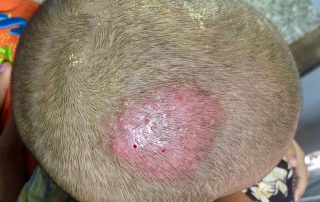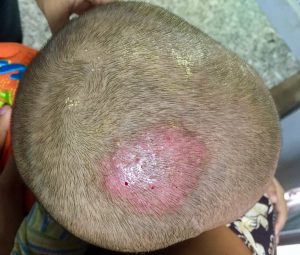Ringworm of the scalp: tinea capitis
Written by Dr Heather Davies-Strickleton, Senior Analytical Scientist
Despite its name, ringworm is not caused by worms, it’s caused by fungi called dermatophytes that can infect the skin and cause a ring-shaped rash. This rash can occur anywhere on the body but when it occurs on the scalp it’s called scalp ringworm, or tinea capitis.
Tinea capitis is a highly contagious fungal infection of the scalp hair and skin. It is more common in children than adults and if fact it is so prevalent among children that it is the most common paediatric dermatophyte infection worldwide.1 Exact numbers are likely underestimated,2 however, globally there are thought to be over 200 million cases3 with the annual market for the treatment of tinea capitis estimated at $0.2-0.5 bn.
Tinea capitis is a frequent problem in most countries, but there is also geographic variation and a high proportion of cases are found in resource-poor areas. For instance, there are estimated to be 78 million cases in Sub-Saharan Africa alone.4 In addition to age-related and geographical differences, different ethnic communities also show variations in tinea capitis incidence. This has been demonstrated by a US study of school children in which infection rates were highest in African-American children (12.9%) and lower in Hispanic (1.6%) Caucasian children (1.1 %).5
The key characteristic of tinea capitis is a red, itchy rash and patchy hair loss. This occurs when dermatophyte fungi that normally live in dead layers of the skin invade the living outermost layer of the skin – the […]


